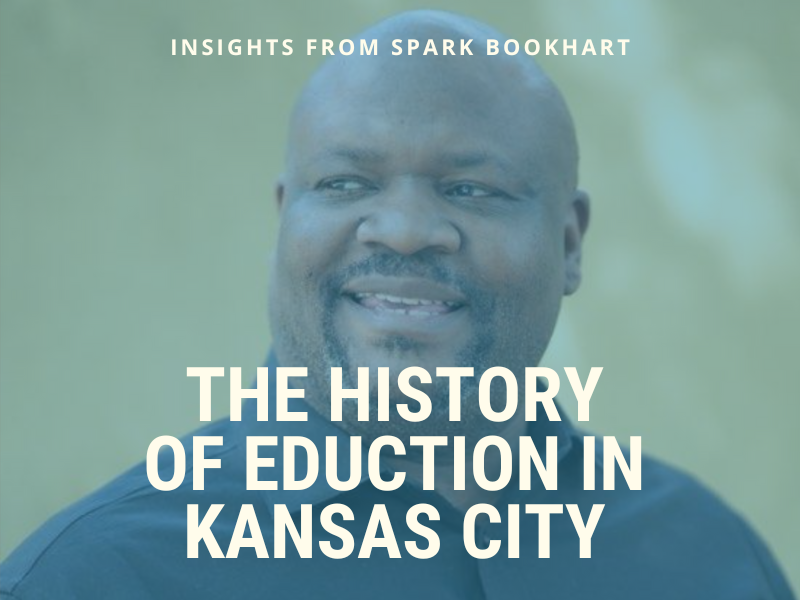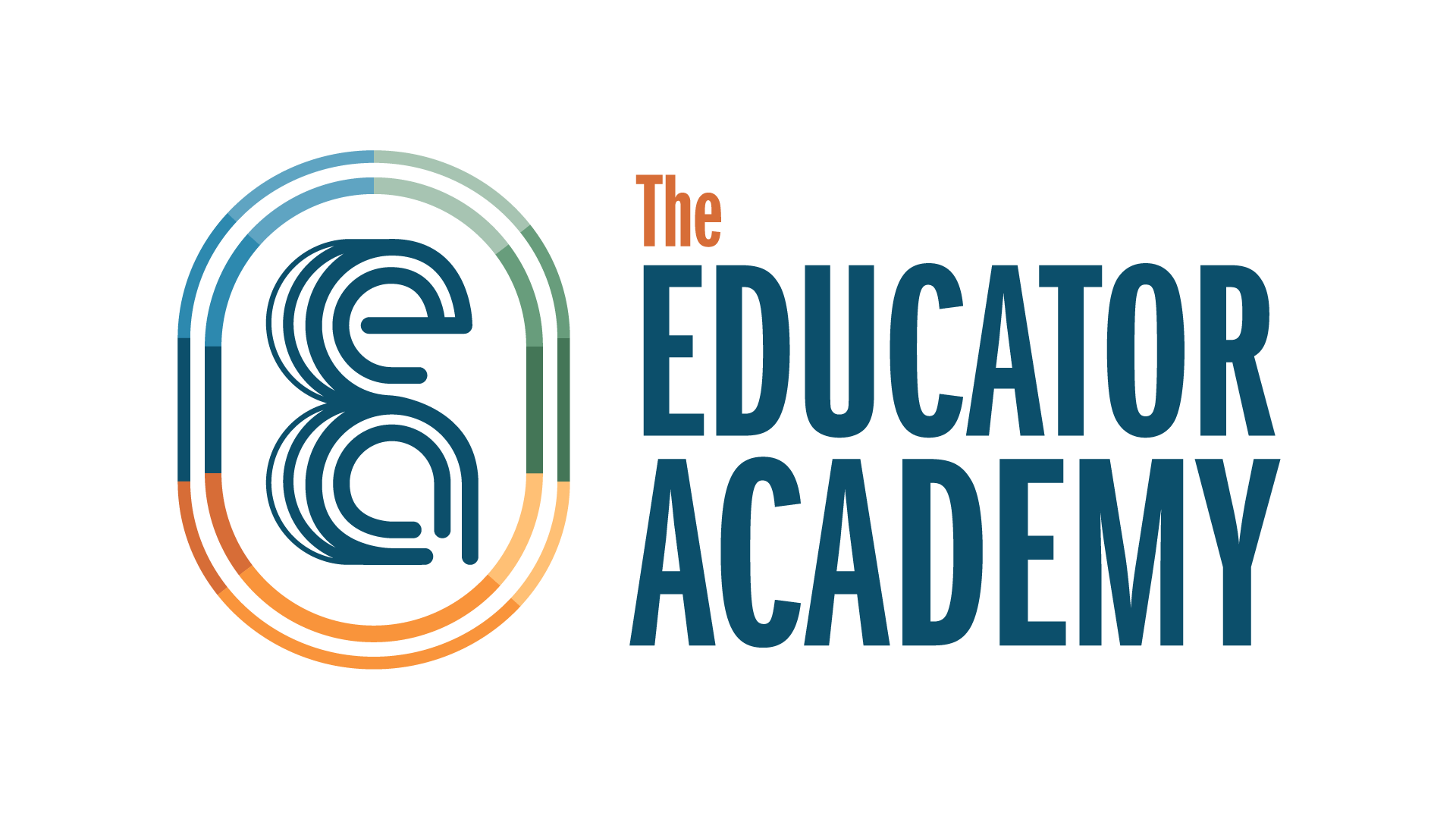
This blog was transcribed from an interview with Spark Bookhart, Founder of Parent Power Lab in Kansas City, on the history of education in Kansas City. This interview has been formatted to fit a blog. All edits are for legibility purposes only.
The Importance of History in Kansas City’s Education
In the heart of Kansas City’s evolving education system, few voices resonate as deeply as Spark Bookhart’s. As the Founder of the Parent Power Lab, Spark’s work centers around empowering parents and unraveling the complex history of race, place, and money in public education. His insights offer a crucial understanding of Kansas City’s systemic educational challenges.
At The Educator Academy, we share a commitment to transforming education through equity and access, ensuring that all students in Kansas City have the tools to succeed. Our mission is to recruit, cultivate, support, and retain a diverse network of empowered and effective educators. We prepare teachers to create transformative and equitable classroom experiences for all students in the communities we serve. This shares Spark’s perspective on the history of education in Kansas City and why it matters.
Parent Power: The Role of Families in Educational Change
Through the Parent Power Lab, Spark Bookhart is dedicated to organizing and empowering parents to advocate for better schools. “You cannot have world-class schools without engaged parents,” Spark shared, highlighting how parent involvement is key to improving public education. His work aims to amplify parents for collective action in order to improve the quality of education in Kansas City.
Spark Bookhart’s journey into educational advocacy began as a concerned parent, navigating the complexities of Kansas City’s public education system. When the state proposed a takeover of the Kansas City Public Schools, Spark felt that the move was an oversimplified solution to a deeper, more complex issue. At the time, the common belief was that schools were failing, and drastic action—such as a state takeover—was the only solution.
In trying to understand the broader context at play, Bookhart began to conduct oral interviews. He met with community members who had witnessed the evolution of Kansas City education over many years. Connecting with community members deepened his passion, revealing how race, place, and money shape education in Kansas City and nationwide. This experience as a parent and researcher fueled his commitment to transforming public education through parent advocacy, leading to his role with Parent Power Lab.
Parent Power Lab’s Approach
Parent Power Lab uses a cohort model to train parents as community leaders, who then form small teams to push for transformative policies. This grassroots approach ensures parents actively shape their children’s educational future, a key driver of public school reform.
When considering the educational landscape of any city, you have to include the parents of the students as well. Research shows that the involvement of parents in a child’s education has positive outcomes for that student’s growth. At The Educator Academy, we focus on ensuring that all students receive a high-quality education. We do this through our residency and fellowship teacher models. Both focus on developing high-quality educators and helping retain them in the classroom for years to come. Developing quality teachers who know their students and families is a key component to the success of our educators.
Race, Place, and Money and The Future of Education in Kansas City
As Spark shared during his interview, understanding the history of education in Kansas City requires looking at three critical elements: race, place, and money. Spark emphasized, “You cannot look at public education in America without considering these factors. If you aren’t talking about race, place, or money, you aren’t talking about public education.”
When asked what he would tell future educators, Spark emphasized the importance of understanding the historical context. “Teaching while ignoring this history is actually doing harm,” he stated. He urged educators to embrace the complexities of race, place, and money rather than compartmentalize them. Understanding these elements is vital to improving educational outcomes for students, particularly in historically marginalized communities.
Spark explained how race, place, and money have long contributed to educational disparities in Kansas City and nationwide. So, what does our history have to do with today?
Migration Patterns
One component that deserves more attention when discussing the Kansas City education landscape and history is the migration patterns of African Americans in Missouri. “During the early 1900s, many African American families moved from rural areas like Chillicothe to Kansas City to access better educational opportunities. At the time, Lincoln High School, now Lincoln Preparatory Academy, was one of the few options for Black students to receive a secondary education in Kansas City. This led to a migration shift that concentrated African American communities in the city.”
This historical movement illustrates how race, place, and education intersected to shape Kansas City’s demographic landscape. Historical patterns still influence where families choose to live based on the perceived quality of education in certain areas. As Spark noted, parents’ decisions about where to live are often driven by access to quality schools, whether for noble reasons or due to systemic inequities.
Segregated Schools Post Brown v. Board of Education
After the 1954 case of Brown v Board of Education, many communities struggled to integrate schools. While the ruling did mandate the end of segregation, many districts either found ways to delay implementation or ignored the ruling. While declaring that separate was not equal, the reaction towards this SCOTUS case was creating a different kind of separation in society. White families moved further into the suburbs, where redlining would prevent black families from living. This would lead to disparities in resources and educational opportunities for black and brown students nationwide.
Redlining and School Funding
Historically, Troost Avenue in Kansas City is labeled as the racial divide of the city. This separation has impacts on racial and socioeconomic diversity. Redlining is the discriminatory practice of denying financial services to certain neighborhoods based on race. Additionally, many neighborhoods, like the Neighborhood designed by J.C. Nichols, were for white families only. Even if a Black family could afford to move west of Troost, they were often denied, which led to some areas staying predominantly white.
Troost has served as a dividing line for racial demographics, economic opportunities, and infrastructure. Historically, the east side of Troost is where Black families would eventually move, while the west side of Troost had mansions and millionaires. West of Troost has enrichments with the Nelson Atkins, UMKC, and The County Club Plaza located there. On the east side of Troost, there isn’t the same type of infrastructure. The implications of this separation for Black families living east of Troy include a lack of access to commerce & art but also a lack of access or opportunity for schools. Until 1954, Lincoln High School and its feeder school would be the only post-elementary school offered to Black families.
Missouri v Jenkins desegregation lawsuit
Attempts to remedy de facto segregation in Kansas City included the case of Missouri v. Jenkins. In 1977, white families moved out of the city post-Brown v. Board, leaving Kansas City public schools with fewer resources, faculty disparities, and reduced educational opportunities. In response a group of students sued the state, arguing these conditions violated the 14th Amendment’s equal protection clause. While they won, the decision’s effects were complex and didn’t bring the full changes they sought.
The Kansas City Public School District (KCPSD) and the state were court-ordered to fund significant improvements, such as better facilities and magnet programs. These changes aimed to attract white students and help desegregate the schools. However, a key issue was that the federal court mandated increased local property taxes to fund these changes. This was challenging for a community with high poverty rates, where local tax revenue was insufficient to fully fund the improvements needed to meet the court’s desegregation goals.
A major point in the case is that in 1995, the U.S. Supreme Court ruled that the lower court had overstepped by ordering ongoing tax increases to finance the improvements. This ruling limited how much the court could enforce desegregation through expensive reforms, highlighting the challenges of trying to fix racial imbalance through local taxation in impoverished areas. Even after years of courtroom battles, the fact remained that schools were largely divided by race, and socioeconomic status.
In an opinion piece written in the Kansas City Star by Damon Lee Patterson he stated that “Missouri v. Jenkins was necessary in its day, but missed the mark and needlessly protracted the pain. The plaintiffs were correct in identifying the funding gap 46 years ago. Judge Clark erred in excluding suburban school districts from the desegregation case in 1984. Magnet schools and proper funding should have been mandated not solely to attract white students but because they were essential. The proposed solution to consolidate the districts would have addressed the funding problem.”
Learning from the Past to Shape the Future
As Kansas City continues to evolve, past lessons must inform the decisions made today. Kansas City can work toward a more equitable and effective public education system by engaging parents, educators, and the community in meaningful conversations. Addressing these challenges requires systemic change and ongoing support for marginalized communities.
At The Educator Academy, we discuss this history with all our teachers in training. We do this to ensure they have a historical understanding of their school communities. As Gary Howard points out, Highly effective teachers (meaning those who most highly meet and fulfill the role of educator) are those who have a deep knowledge of their students, of themselves as a teacher, and of their content. By understanding the history of their school and school communities, teachers can better understand themselves and the environment in which they teach.
Spark reminds us that the challenges we face today are deeply rooted in systemic issues of race, place, and money. Through the Parent Power Lab, Spark empowers families to take an active role in transforming public schools. As parents and educators learn from the past, they create hope for a brighter, more equitable future for Kansas City’s students
As Spark says, “I think there’s no more important work that we as a society face right now than educating the next generation.”
“We have to do a tremendously different job than we did educating the last generation. If we take that to heart and learn the lessons from these past 50 or 60 years, we could have better outcomes for what education produces. Bot just test scores, but humans who advance the forward flow of humanity.”

